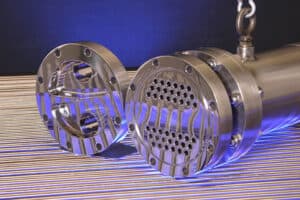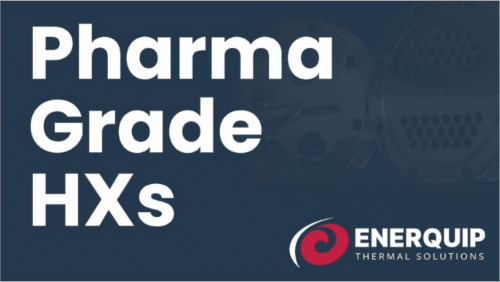Pharmaceutical Manufacturers Must Meet ASME-BPE Standards
Leave a CommentEditor’s note: Content last updated 3/7/24
In any industry, it’s important to have standards that lay out what consumers expect of the products created by manufacturers and define the processes by which these products can be created. Without standards, consumers may mistakenly purchase a subpar product that does not meet their expectations, leaves them frustrated and damages the manufacturer’s reputation.
In certain industries, compliance with these standards is absolutely critical. In any market where end users are coming in direct contact with a product or ingesting it – like the food and beverage, dairy or pharmaceutical industries – manufacturers must take every step possible to ensure the final product meets consumer expectations and is safe to consume.
To ensure that all products are high-quality, there are countless standards that govern many different industries. For example, fabricators of equipment for the dairy industry adhere to 3-A Sanitary Standards, created in the 1920s to ensure that all machinery that came in contact with milk and milk-based products created a sanitary environment.
Pressing need for pharmaceutical standards
Where the food, beverage, and dairy industries have excelled in having extensive rules and regulations regarding the environments in which products could be made, the pharmaceutical industry fell short. For many years, there was no 3-A equivalent for biopharma manufacturers that explained what sorts of materials could be used to make equipment or how that equipment needed to be treated or maintained.
Manufacturers filled the void in their own ways. Some created their own in-house standards to ensure their products would always be consistent. Many turned to the dairy industry’s 3-A standards and applied them to their pharmaceutical operations.
Though sufficient to keep products sanitary, safe and consistent, the lack of a uniform standard weighed on the industry. After numerous requests, the American Society of Mechanical Engineers collaborated to come up with the ASME-BPE (Bioprocessing Equipment) Standard.
The standard was first published in 1997 and updated several times since. With it, pharmaceutical manufacturers are better able to communicate their needs to equipment fabricators, collaborate with other companies and stay in line with the U.S. Food and Drug Administration’s policies and current good manufacturing practices.
ASME-BPE related to heat exchangers
The ASME-BPE standard covers a wide range of topics, but here are ten important parts related to shell and tube heat exchangers:
- Material selection: Heat exchangers should be constructed of materials that are compatible with the process fluid and cleaning solutions, and which meet the purity and quality requirements of the biopharmaceutical industry.
- Surface finish: The interior surfaces of heat exchangers should have a smooth, uniform finish that is resistant to corrosion and microbial growth.
- Welding and joining: The welding and joining techniques used in the construction of heat exchangers should meet the requirements of the ASME-BPE standard, including orbital welding, electropolishing, and passivation.
- Design and construction: Heat exchangers should be designed and constructed in accordance with the requirements of the ASME-BPE standard, including dimensional tolerances, material specifications, and surface finish requirements.
- Testing and inspection: Heat exchangers should undergo rigorous testing and inspection to ensure that they meet the quality and performance standards required by the biopharmaceutical industry.
- Cleanability: Heat exchangers should be designed and constructed to facilitate thorough cleaning and sterilization, with no dead spots or areas that are difficult to access.
- Surface finish measurement: The surface finish of heat exchangers should be measured using appropriate techniques, such as profilometry, to ensure that it meets the required standards.
- Gasket and seal materials: The gaskets and seals used in heat exchangers should be constructed of materials that are compatible with the process fluid and cleaning solutions, and which meet the purity and quality requirements of the biopharmaceutical industry.
- Pressure testing: Heat exchangers should undergo pressure testing to ensure that they can withstand the operating pressures and temperatures required by the biopharmaceutical process.
- Documentation: All aspects of the design, construction, and testing of heat exchangers should be fully documented, with detailed records of materials, processes, and inspections maintained for regulatory compliance and quality assurance purposes.
Understanding your operation’s needs
Your operation likely comprises multiple systems and units to produce various products, each with its own unique requirements and features.
Certain sections of the standards will relate more closely to specific parts of your operation. For instance, your high-sensitivity processes require the strictest adherence to the standards since they come into direct contact with the product. Such processes need highly cleanable surfaces with many requiring electropolished finishes. It is important to choose appropriate materials for not only the interior surfaces but also exterior surfaces.
In contrast, low-sensitivity processes do not come in contact with the product. Rather, they support the systems that do. Therefore, it is important to carefully fabricate low-sensitivity processes to ensure a sanitary environment. However, these processes do not need to be as high-grade as the ones that directly touch the final product, such as tank jacket systems.
A seat at the ASME-BPE table
Preferred equipment suppliers like Enerquip proactively participate in the ASME-BPE committee meetings to help shape the standards that apply to shell and tube heat exchangers. If your pharmaceutical manufacturing operations require new or upgraded shell and tube heat exchangers, we invite you to connect today.
More from the Enerquip blog
- How Economizers Enhance Thermal Oxidizers
- Double Tube Sheet Design: Importance and Applications
- Standards for Sanitary & High-Purity Processing Equipment
- Five Important Qualities to Look for in Pharmaceutical Process Equipment
- Preventing Cross Contamination in Your Shell and Tube Heat Exchangers
- What You Need to Know About Cleaning Different Tube Configurations



